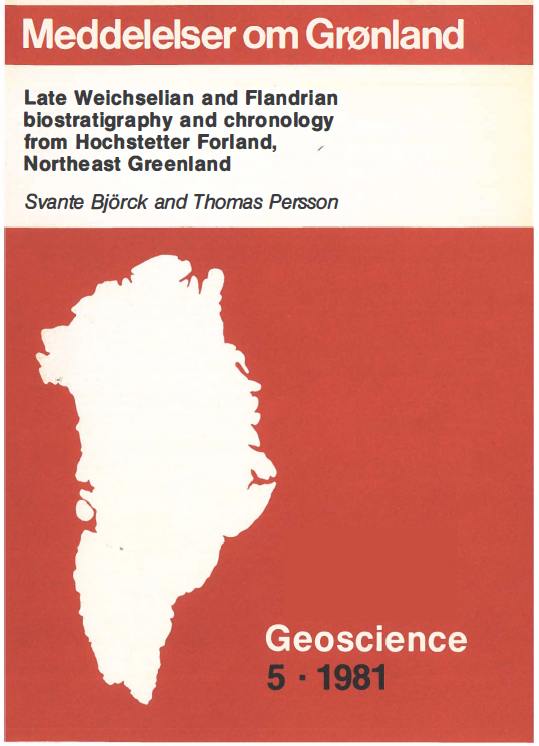Late Weichselian and Flandrian biostratigraphy and chronology from Hochstetter Forland, Northeast Greenland
DOI:
https://doi.org/10.7146/moggeosci.v5i.141016Abstract
Two lakes on Hochstetter Forland have been analysed with respect to lithostratigraphy and pollen and algae stratigraphy. The sediments have been radiocarbon dated and these dates show that Hochstetter Forland was not covered by the Inland Ice during the Late Weichselian. The early Flandrian stratigraphic sequences of the two lakes are interrupted by barren interzones, dated at 10 100 - 8100 B. P. and 10 100 - 9200 B. P., which are partly correlated to an ice-advance. No evidence for an earlier ice-advance during the Late Weichselian has been found. Apart from the abundance of pollen grains indicating pioneer vegetation, Artemisia pollen grains are found in high quantities in the Late Weichselian, although it is today not found within the area. The Flandrian pollen stratigraphy indicates a development similar to that which has been found in the Scoresby Sund area. However, Cassiope tetragona and Salix arctica immigrate much earlier than further south. The Flandrian climatic optimum in the Hochstetter Forland area seems to have been reached between 6000 and 5000 B. P. The Flandrian shore-line displacement is roughly estimated.

Downloads
Published
How to Cite
Issue
Section
License
Coypyright by the authors and the Commision for Scientific Research in Greenland / Danish Polar Center. No parts of the publications may be reproduced in any form without the written permission by the copyright owners.

